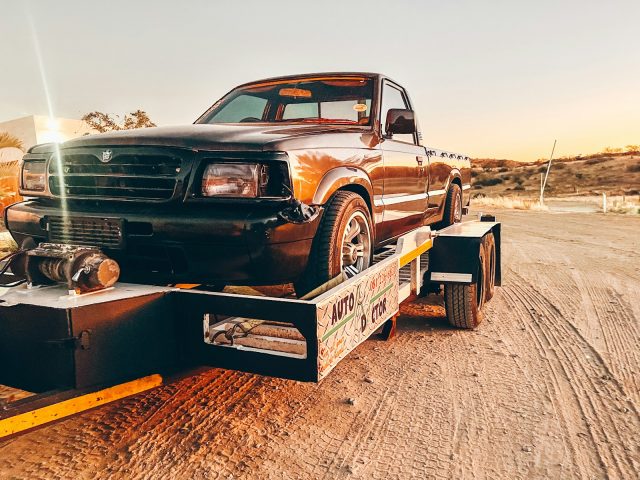Demand for serious towing muscle is surging, and diesel engines remain the backbone of heavy-haul work. These powerplants offer a torque-rich foundation that, when tuned intelligently, can punch above stock limits without sacrificing reliability. We’ll cut past the marketing fluff and get into the kinds of modifications that actually matter: pairing smart airflow improvements with precise fueling and sharp engine management. Done right, these changes deliver measurable gains in pulling power while keeping EGTs civilized. If you want results that last, you need upgrades that respect thermodynamics, metallurgy, and hard miles under load. Let’s get to it.
Table of Contents
- Optimizing Turbo Systems for Sustainable Diesel Performance
- Upgrading Fuel Delivery for Precision Diesel Performance
- Enhancing Air Intake and Filtration for Peak Diesel Performance
- Exhaust Upgrades for Diesel Performance Gains
- ECM Remapping and Aftermarket Engine Management
- Cooling Solutions to Support Higher Diesel Output
- Routine Maintenance for Modified Diesel Engines
- Selecting the Right Diesel Performance Shop
- Driving Habits to Preserve Enhanced Components
- Translating Upgrades into Real-World Gains
Optimizing Turbo Systems for Sustainable Diesel Performance
Variable-geometry turbos deliver crisp boost control, shrinking spool-up lag while sustaining pressure at higher loads. Upgrades like billet compressor wheels bring greater blade efficiency and better surge resistance. Stock turbos might hover around 20–25 psi; well-chosen aftermarket units can safely push past 35 psi with airflow exceeding 900 CFM, provided thermal limits are managed. Heat is your enemy in sustained towing, so think about front-mounted intercoolers with broad cores, properly located heat shields, and dedicated oil cooling circuits. When the compressor stays cool, bearings live longer, boost stays solid, and the driveline feels the benefit over every climb.
Upgrading Fuel Delivery for Precision Diesel Performance
High-pressure common rail systems can be taken from adequate to surgical with upgraded pumps and matched injectors. Increase flow rate, but only alongside careful pump calibration to prevent uneven cylinder fueling. Optimal injector spray patterns must align with your boost curve and combustion timing. Precision isn’t optional at this level. For those lacking advanced calibration tools, Parleys diesel performance is a reputable resource for pump tuning and injector matching. A well-balanced fuel system will make turbo upgrades shine, delivering torque that feels immediate yet controlled, and it will keep detonation risks out of your rearview.
Enhancing Air Intake and Filtration for Peak Diesel Performance
Factory airboxes are functional, but they choke performance when airflow demand spikes. Pod filters boost airflow numbers, though cold-air intakes offer better temperature control and filtration longevity. Aim for intake tubes around 4 inches in diameter for most towing builds, with aluminum for rigidity or silicone for heat soak resistance. Ram-air designs can add useful pressure at highway speeds. Keep filters clean with scheduled maintenance—oiled cotton needs a proper wash, while dry synthetics benefit from low-pressure compressed air. Neglect this and you’ll invite restriction that undoes every dollar spent downstream.
Exhaust Upgrades for Diesel Performance Gains
Pipe diameter dictates backpressure, and backpressure dictates turbo efficiency. Moving from a restrictive 3-inch stock to a 4-inch mandrel-bent system can deliver 30–40 lb-ft of torque across midrange RPMs. Downpipe design influences how quickly gases evacuate the turbine housing. Cat-back systems add sound and moderate gains; DPF-back setups keep emissions gear intact but still improve spool-up. Know your local laws before making noise your badge of honor. Mandrel bends keep flow smooth, while crush bends rob velocity. Get it right, and you’ll hear and feel the turbo working cleaner.
ECM Remapping and Aftermarket Engine Management
Off-the-shelf tunes serve quick results, but they’re blunt instruments. A custom dyno session tailors every map to how your truck lives and works. Adaptive boost controls, refined fuel trims, and timing safeguards keep your power curve healthy under real towing strain. Post-remap, expect horsepower lifts around 15–20 percent with torque surges sharper in the midband. This isn’t only about peak numbers; it’s about how predictably that torque lands in your usable range, pulling without heat spikes or stumble.
Cooling Solutions to Support Higher Diesel Output
More boost and fuel equal more heat. Bar-and-plate intercoolers absorb and dissipate better during long pulls, while tube-and-fin designs favor lighter applications. Oil coolers shield bearings from sustained high-load shear, and high-flow radiators keep coolant steady. The right core size means maximum surface without suffocating airflow through the grille. Fin density should balance heat exchange with debris resistance when running rural.
Routine Maintenance for Modified Diesel Engines
Performance mods demand tighter service discipline. Synthetic blends rated for high soot tolerances should be swapped earlier than OEM schedules. EGTs, rail pressure, and boost deserve a watchful eye, tracked through dedicated gauges or dataloggers. Sensors like MAP and MAF are silent gatekeepers—replace them on schedule or your ECM will feed bad data into good hardware.
Selecting the Right Diesel Performance Shop
Credibility beats price. Look for shops with verifiable certifications, in-house dyno gear, and clear before-and-after documentation. Warranty coverage matters, especially when pushing factory boundaries. Avoid cookie-cutter tunes that ignore the unique demands of your truck’s build, geography, and duty cycle.
Driving Habits to Preserve Enhanced Components
A fresh upgrade isn’t fully alive until it’s broken in with patience. Apply gradual load increases, start with restrained boost runs, and keep temps in check. Proper warm-up prevents cold-oil wear, while a slow cool-down protects turbo bearings from cooking. High-quality diesel reduces deposits, and periodic fuel system cleaning keeps injectors as sharp as day one.
Translating Upgrades into Real-World Gains
Action plan:
- Select a high-flow intake matched to your turbo goals
- Schedule custom ECM tuning
- Install larger exhaust components for freer flow
- Upgrade intercooling for sustained towing heat control
- Match fuel delivery to airflow improvements
Stacking these upgrades compounds their benefits. The right turbo, fueling, and management partnership transforms towing into a smoother, stronger, and safer experience. Consult a trusted shop and map out your build before turning the first wrench.
